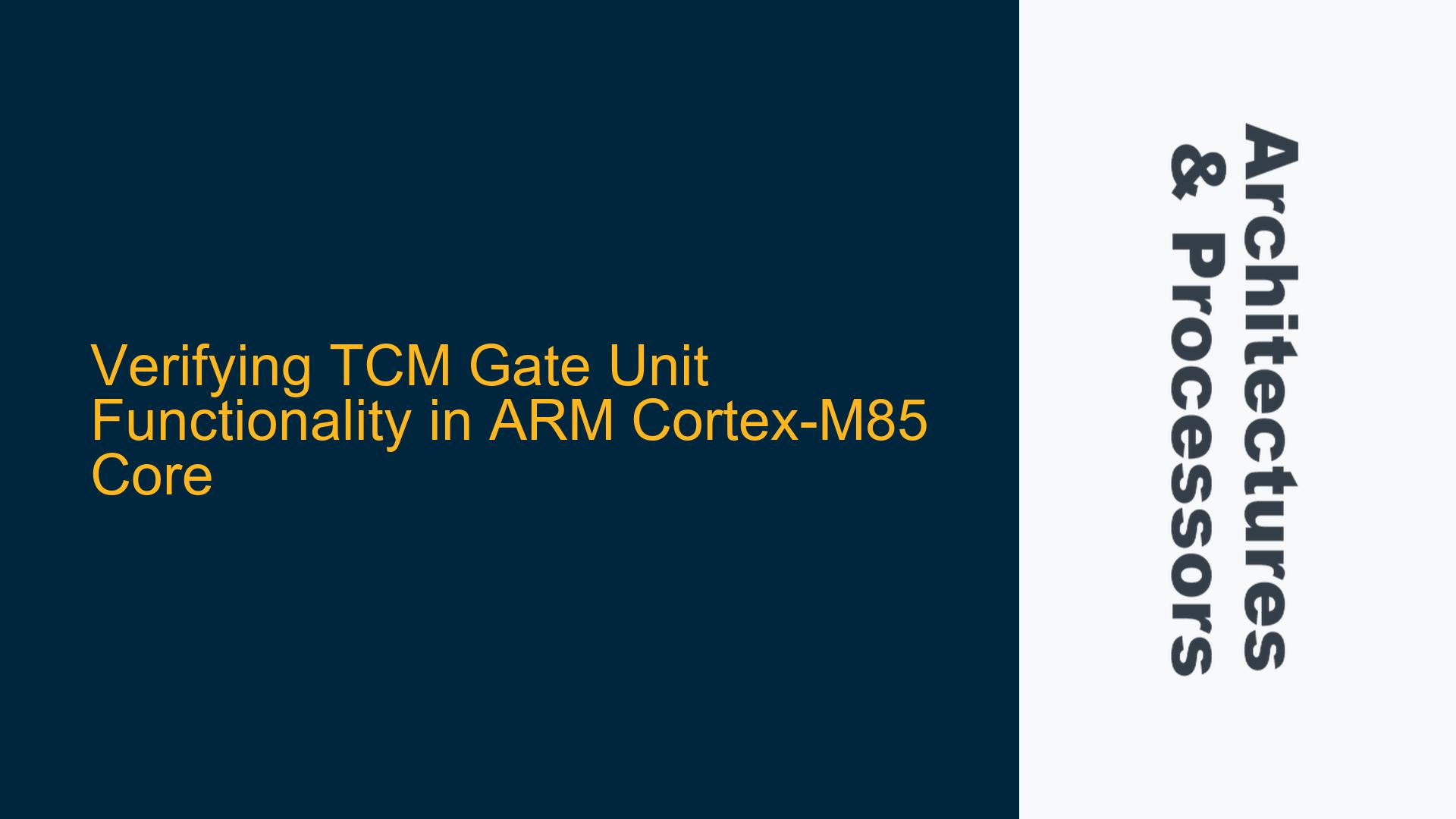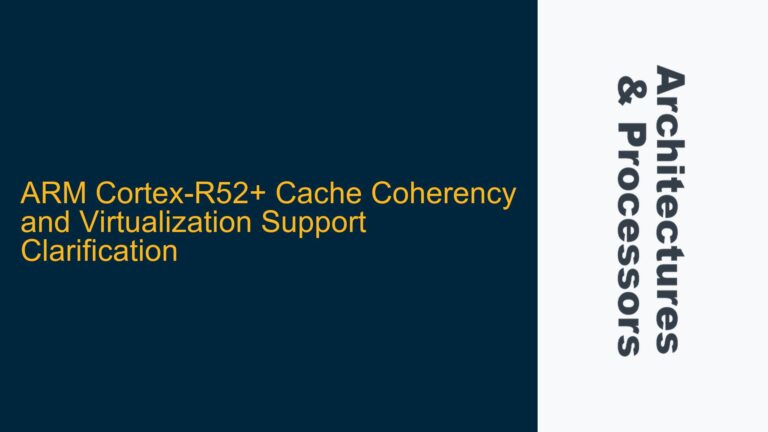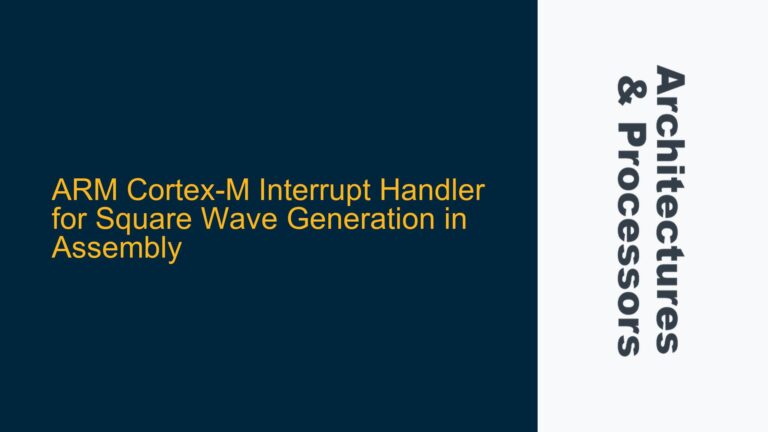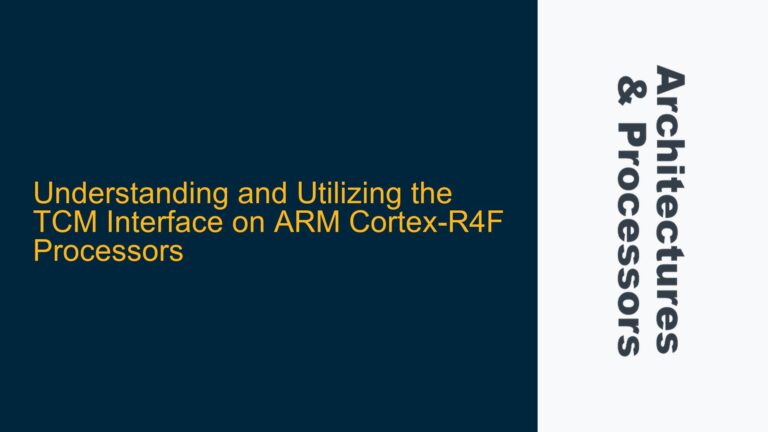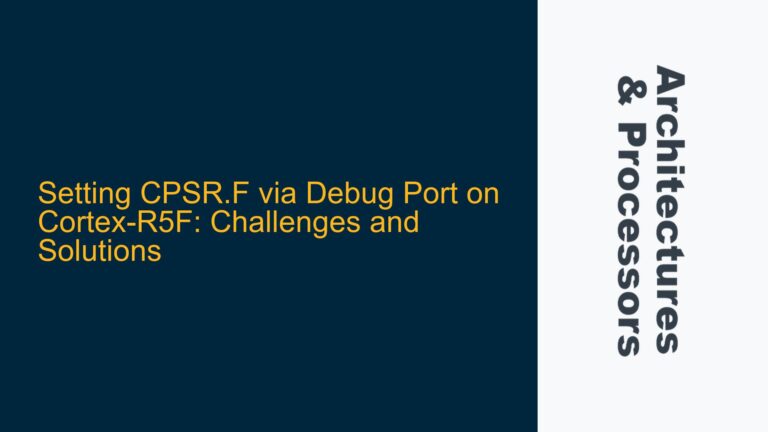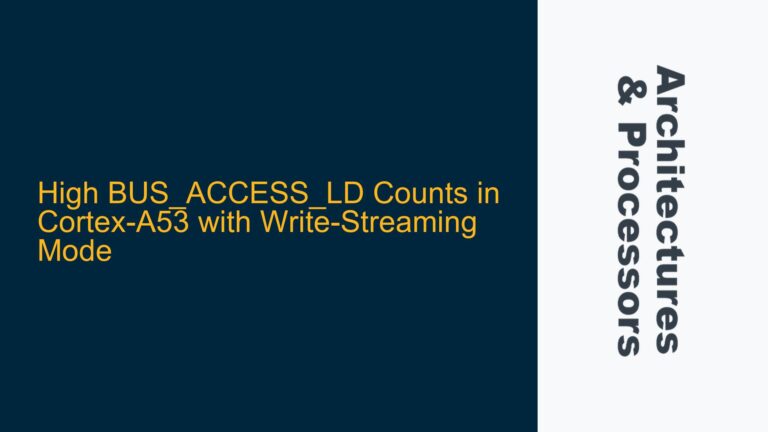Understanding TCM Gate Unit in ARM Cortex-M85 Core
The Tightly Coupled Memory (TCM) Gate Unit in the ARM Cortex-M85 core is a critical component that manages access to the TCM regions. TCM is a high-speed memory that is directly connected to the processor, providing low-latency access for time-critical code and data. The TCM Gate Unit ensures that accesses to TCM are properly synchronized and that the memory is protected from unauthorized access. This is particularly important in safety-critical applications where deterministic behavior and memory integrity are paramount.
The TCM Gate Unit operates by controlling the flow of data and instructions between the processor and the TCM. It ensures that only valid transactions are allowed to pass through, and it can be configured to enforce specific access policies. For example, the TCM Gate Unit can be programmed to allow only privileged access to certain regions of TCM, or to enforce read-only access for specific memory ranges.
To verify the functionality of the TCM Gate Unit, it is essential to create a comprehensive test case that exercises all the features and configurations of the unit. This involves writing C code that interacts with the TCM Gate Unit, configuring the unit through the appropriate registers, and then verifying that the expected behavior is observed. The test case should cover both normal operation and edge cases, such as attempting to access protected regions or performing unauthorized operations.
Potential Misconfigurations and Hardware-Software Interaction Issues
One of the primary challenges in verifying the TCM Gate Unit is ensuring that the hardware and software are correctly configured to interact with each other. Misconfigurations can lead to unexpected behavior, such as data corruption, unauthorized access, or even system crashes. One common issue is the incorrect setting of the TCM Gate Unit control registers, which can result in the unit not enforcing the intended access policies. For example, if the access control bits are not set correctly, the TCM Gate Unit may allow unauthorized access to protected memory regions.
Another potential issue is the timing of cache invalidation and memory barrier operations. The ARM Cortex-M85 core uses a cache to improve performance, but this can introduce complexities when dealing with TCM. If the cache is not properly invalidated before accessing TCM, the processor may read stale data from the cache instead of the actual contents of TCM. Similarly, if memory barriers are not used correctly, the processor may reorder memory accesses in a way that violates the intended synchronization between the TCM Gate Unit and the rest of the system.
Additionally, the TCM Gate Unit may interact with other system components, such as the Memory Protection Unit (MPU) or the Bus Fabric. Misconfigurations in these components can also lead to issues with the TCM Gate Unit. For example, if the MPU is configured to allow access to a region of TCM that is supposed to be protected by the TCM Gate Unit, the protection mechanism may be bypassed. Similarly, if the Bus Fabric is not configured correctly, it may not properly route transactions to the TCM Gate Unit, leading to access failures or incorrect behavior.
Developing a Comprehensive C Test Case for TCM Gate Unit Verification
To verify the functionality of the TCM Gate Unit in the ARM Cortex-M85 core, a comprehensive C test case must be developed. This test case should cover all aspects of the TCM Gate Unit’s operation, including access control, synchronization, and interaction with other system components. The following steps outline the process of developing and executing such a test case.
Step 1: Configuring the TCM Gate Unit Control Registers
The first step in verifying the TCM Gate Unit is to configure its control registers. These registers define the access policies for the TCM regions, such as whether access is allowed, whether it is privileged or unprivileged, and whether it is read-only or read-write. The test case should include code that sets these registers to different configurations and then attempts to access the TCM regions to verify that the access policies are enforced correctly.
For example, the test case could configure the TCM Gate Unit to allow only privileged access to a specific region of TCM. The test case would then attempt to access this region from both privileged and unprivileged code, and verify that the access is allowed or denied as expected. Similarly, the test case could configure the TCM Gate Unit to enforce read-only access to a region, and then attempt to write to that region to verify that the write operation is blocked.
Step 2: Testing Cache Invalidation and Memory Barrier Operations
The next step in the test case is to verify that cache invalidation and memory barrier operations are working correctly in conjunction with the TCM Gate Unit. This involves writing code that performs cache invalidation and memory barrier operations before and after accessing TCM, and then verifying that the correct data is read from TCM.
For example, the test case could write a known value to a region of TCM, invalidate the cache, and then read the value back from TCM to verify that the correct value is returned. Similarly, the test case could use memory barriers to ensure that memory accesses are properly synchronized with the TCM Gate Unit. This could involve writing to a region of TCM, issuing a memory barrier, and then reading from the same region to verify that the write operation has completed before the read operation.
Step 3: Verifying Interaction with Other System Components
The final step in the test case is to verify that the TCM Gate Unit interacts correctly with other system components, such as the MPU and the Bus Fabric. This involves configuring these components to work with the TCM Gate Unit, and then verifying that the expected behavior is observed.
For example, the test case could configure the MPU to allow access to a region of TCM that is protected by the TCM Gate Unit, and then attempt to access that region to verify that the protection mechanism is not bypassed. Similarly, the test case could configure the Bus Fabric to route transactions to the TCM Gate Unit, and then verify that the transactions are properly routed and that the TCM Gate Unit enforces the correct access policies.
Step 4: Handling Edge Cases and Error Conditions
In addition to testing
